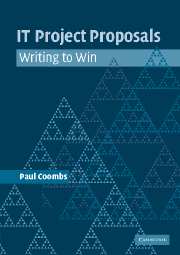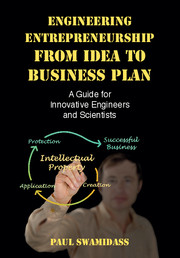IT Project Proposals
Whether responding to a potential client's request or pitching a new IT project to the Board, a well-written proposal can be the difference between success and failure. This volume can help create high-quality, persuasive proposals. Paul Coombs explains how to influence the reader's decision by developing the writer's unique selling points. He discusses the structuring of documents, the secrets behind persuasive writing, and the basic grammar and punctuation rules that will prevent writers from destroying a good argument through bad presentation. The volume is written for IT managers, consultants and anyone producing internal or commercial proposals.
- Addresses the unique problems of IT project proposals
- Easy-to-read and humorous, with real-life examples
- Contains practical advice and usable techniques
Reviews & endorsements
"All proposal writers should read this superb book. In fact, all technical communicators should have it at their desks. It is easy to read, is designed well in its use of white space and typography, and offers many useful concepts. Even if its overall size might lead you to believe that it doesn't have much to say, this small book is packed with loads of information."
Jackie Damrau for Technical Communication
Product details
September 2005Paperback
9780521612579
158 pages
247 × 174 × 9 mm
0.26kg
13 b/w illus. 10 tables
Available
Table of Contents
- 1. Introduction
- 2. Establishing the strategy
- 3. Choosing the content
- 4. Structuring the proposal
- 5. Tightening up the text
- 6. Obeying the grammar rules
- 7. Obeying the punctuation rules
- 8. Finishing off
- 9. Reviewing the result
- 10. Summary
- Appendix A. The document standard
- Appendix B. References and resources
- Appendix C. Case studies.






